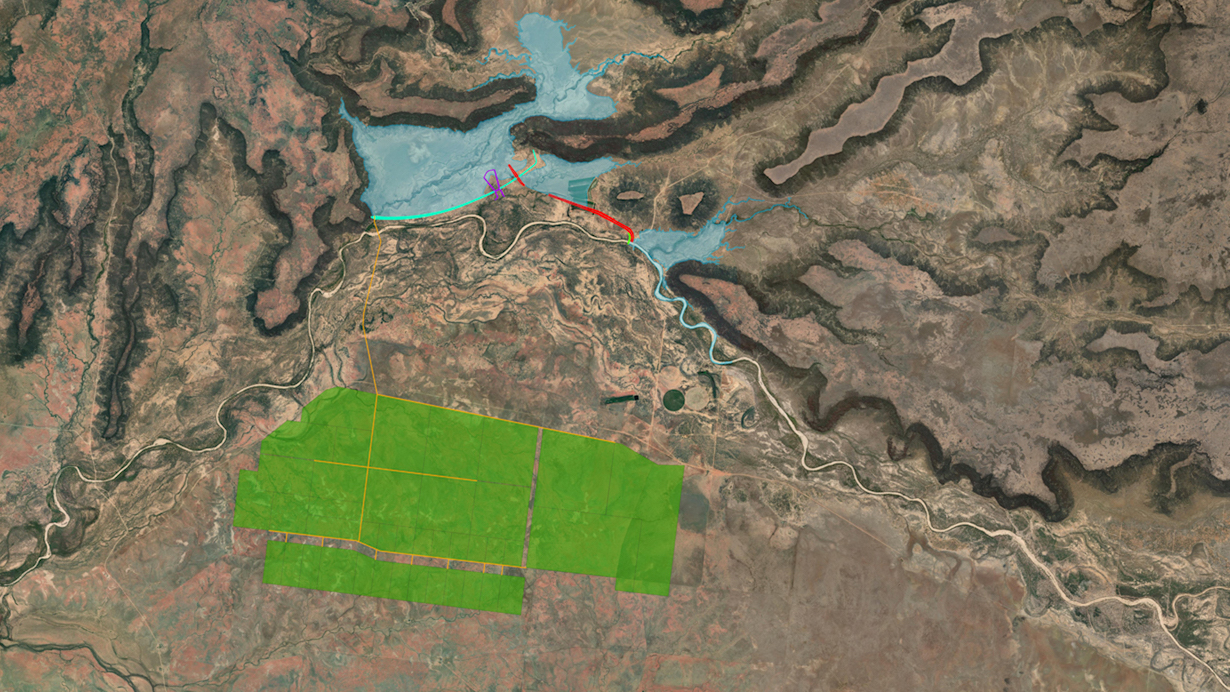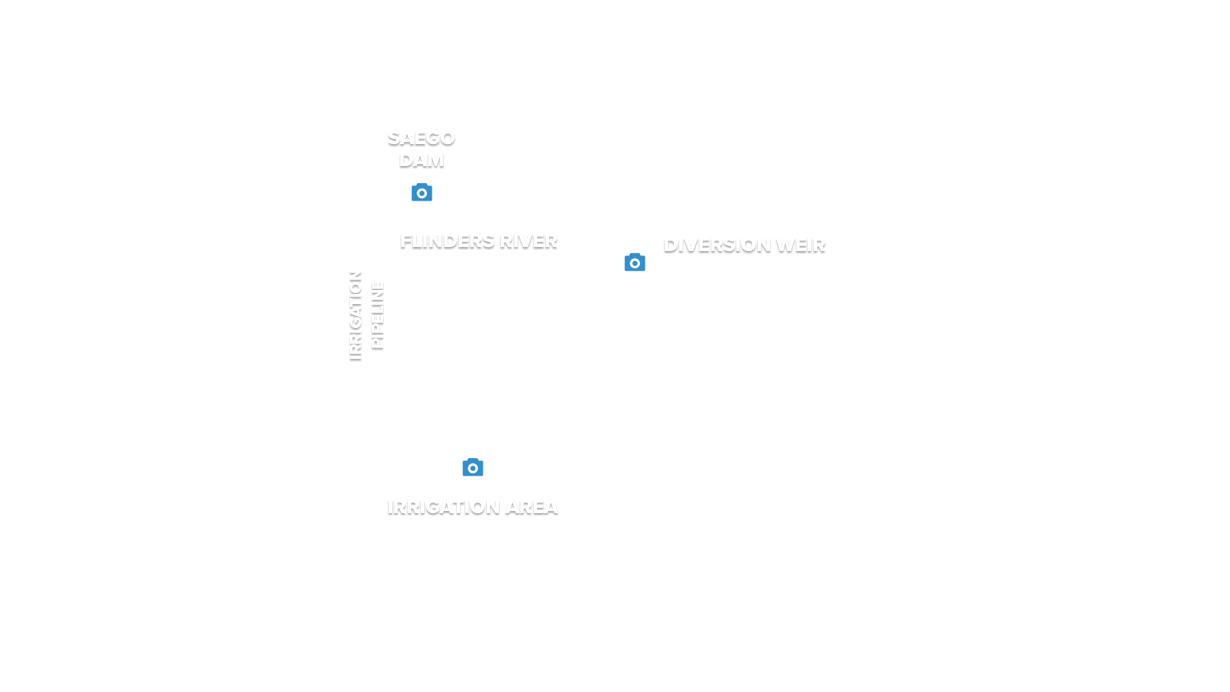Project Details
Ensuring the sustainability
of the Flinders region
The current concept is to build a 7.6 km zoned earth filled embankment adjacent to the Flinders River on Saego Station and make use of the natural topography of surrounding basalt plateau to create a water storage with a capacity in the order of 161,000 ML. Water will be taken from this storage and delivered to an irrigation precinct area of 11,000 ha. By end of the next decade the project is expected to stimulate the development of more than 20,000 ha of good agricultural land in the region, similar to what has happened at St George and Emerald.
What is key to this project is effective and efficient management and use of unallocated general reserve water within the Flinders River to deliver high value horticulture crops, such as avocados, mangoes, lemons and mandarins and deliver cereal grains, hay, and fodder crops to support the local cattle industry.
High value horticulture crops have not generally been grown within the region due to a lack of reliable water supply. To provide a reliable water supply, it is proposed to build a large-scale instream Dam of 161,000 ML, that will be located 45km north-west of Hughenden on the northern side of the Flinders River. Water stored behind a weir on the Flinders River near Alderley Crossing will be connected via a 5 km gravity diversion channel to other instream storages diverting water from the Stewart and Jones Valley Creek catchments and indirectly from Back Valley Creek catchment. A pipeline will be built to take water from the Saego Dam outlet and transport it under the Flinders River to the irrigation precinct area which is located on the southern side of the Flinders River. The scheme is designed to be fully compliant with the environmental flow objectives of the Gulf Water plan.
The rich black soil plains located immediately on the southern side of the Flinders River, within “Dunluce” is ideal for irrigated agriculture, due to soil composition, topography, being outside the floodplain and mostly clear of trees. Infrastructure consisting of pipelines and pump stations is required to deliver water from Saego dam to the proposed irrigation precinct.
The 161,000 ML storage will support a water yield of up to 74,000 ML/year of medium priority supplemented water allocations (at 80% monthly reliability) or up to 32,000 ML/year of high priority supplemented water allocations (at 95% monthly reliability). The DBC has assumed that ultimately there is likely to be a mix of these two water products in the proposed scheme comprising of around 33,000 ML/year of medium priority water to irrigate 3,000 ha of cereal grains, hay, and fodder crops and around 18,000 ML/year of high priority agricultural water to irrigate 1,800 ha of high value horticultural crops.
The new scheme will transform Hughenden and the Flinders Shire communities into a diverse, future-proofed and resilient agricultural and economic powerhouse in north Queensland. The scheme will generate $776.6 million in benefits (net present value) over the life of the project and over 1,900 ongoing new agricultural jobs, at full production. It will also create 2,500 jobs over the two-to-three-year construction period, comprised of almost 600 people directly employed in construction living in worker accommodation. At full production, about 1,900 indirect jobs to support delivery of what may well be part of a nation building project.


